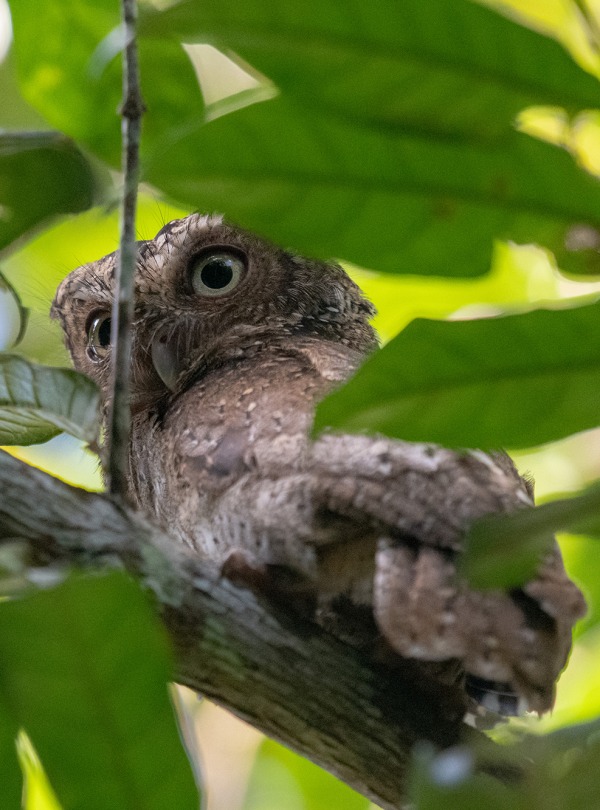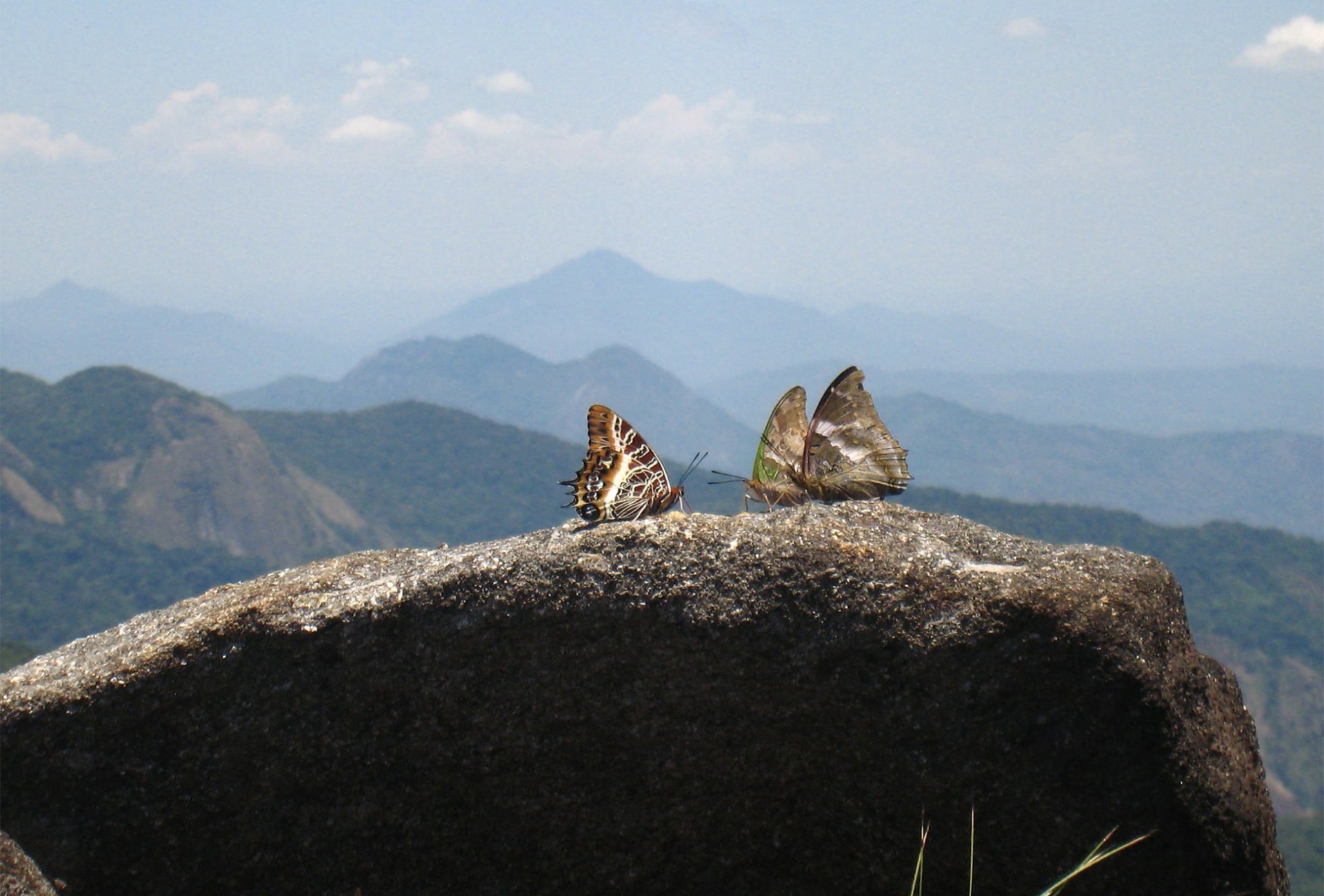
Save Mozambique’s Butterfly Forest
Support more work like this!Support more work like this!Mozambique’s Mabu Forest is referred to as “the butterfly forest” because throughout October and November, hundreds of butterfly species follow rivers upstream to the summit of Mount Mabu.
-
Species at Risk
Mount Mabu Bush Viper (EN), Mount Mabu Horseshoe Bat (EN), Namuli Apalis (EN), Mabu Mistletoe (EN), Vincent’s Bush Squirrel (EN)
-
Carbon stored
1,642,147*
*(metric tons of CO2 equivalents) -
Partner
Rede para Gestão Comunitária de Recursos Naturais (R-GCRN)
-
18,277 Proposed Acres Conserved by
Designation
-
Project Cost: $1,102,316
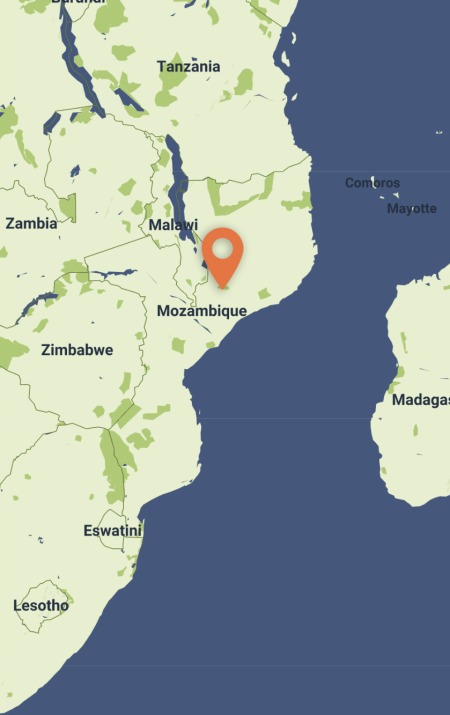
18,277
Mozambique’s Mabu Forest is referred to as “the butterfly forest” because throughout October and November, hundreds of butterfly species follow rivers upstream to the summit of Mount Mabu.
-
Species at Risk
Mount Mabu Bush Viper (EN), Mount Mabu Horseshoe Bat (EN), Namuli Apalis (EN), Mabu Mistletoe (EN), Vincent’s Bush Squirrel (EN)
-
Carbon stored
1,642,147*
*(metric tons of CO2 equivalents) -
Partner
Rede para Gestão Comunitária de Recursos Naturais (R-GCRN)
-
18,277 Proposed Acres Conserved by
Designation
-
Project Cost: £798,779

18,277
Protect threatened butterflies in this magical forest
Imagine a hidden rainforest nestled in the mountains between Mozambique and Malawi where a sacred mountain—Mount Mabu—rises 5,500 feet into the sky. This isn’t a fictional place—it’s Mabu Forest, also known as the butterfly forest—where hundreds of butterfly species make their home.
Groups of butterflies, called a kaleidoscope, follow rivers upstream every October and November to the summit of Mount Mabu, where their life-affirming courtship rituals take place. At least six threatened butterfly species unique to this area, as well as hundreds of other butterfly species, take part in this rare phenomenon known as butterfly ‘hill-topping.”
This magical forest is home to hundreds of butterfly species, including six threatened species unique to this area. In total, 672 species—many of them endemic, as well as new—including reptiles (snakes, chameleons, geckos), small mammals (bats and shrews), plants (mistletoe), butterflies and ants find shelter on Mount Mabu or the surrounding ecoregion.
With the support of Rainforest Trust, our partner, Rede para Gestão Comunitária de Recursos Naturais, will establish the 18,277-acre Mabu Forest Conservation Area by engaging local communities as essential partners in its conservation, management and future.
Did you know?
Species live in Mabu Forest
Explore Mozambique
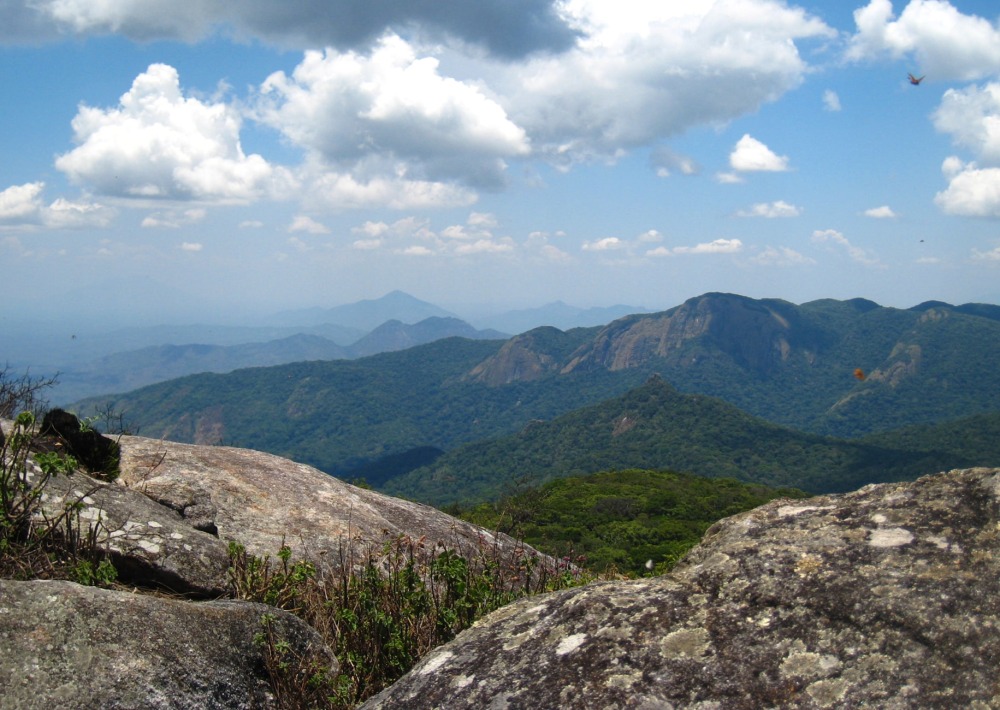
The Butterfly Forest of Mount Mabu in Mozambique, by Julian Bayliss

A butterfly species, Epamera malaikae, that ascends to the summit of Mount Mabu each year, by Colin Congdon
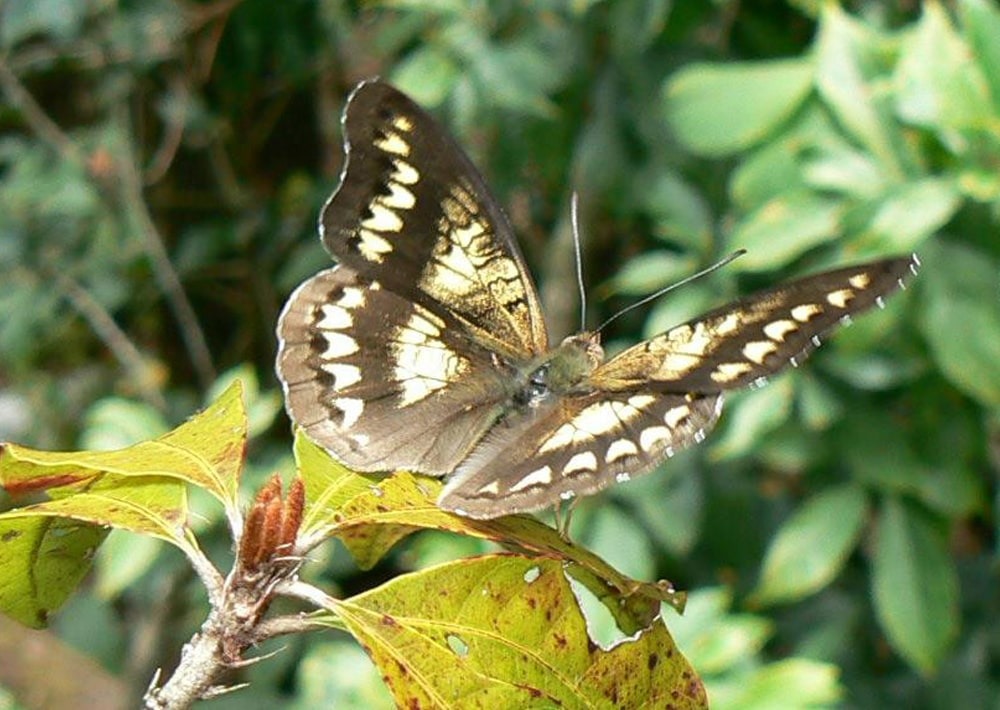
A butterfly species, Cymothoe baylissi poppyana, that ascends to the summit of Mount Mabu each year, by Julian Bayliss
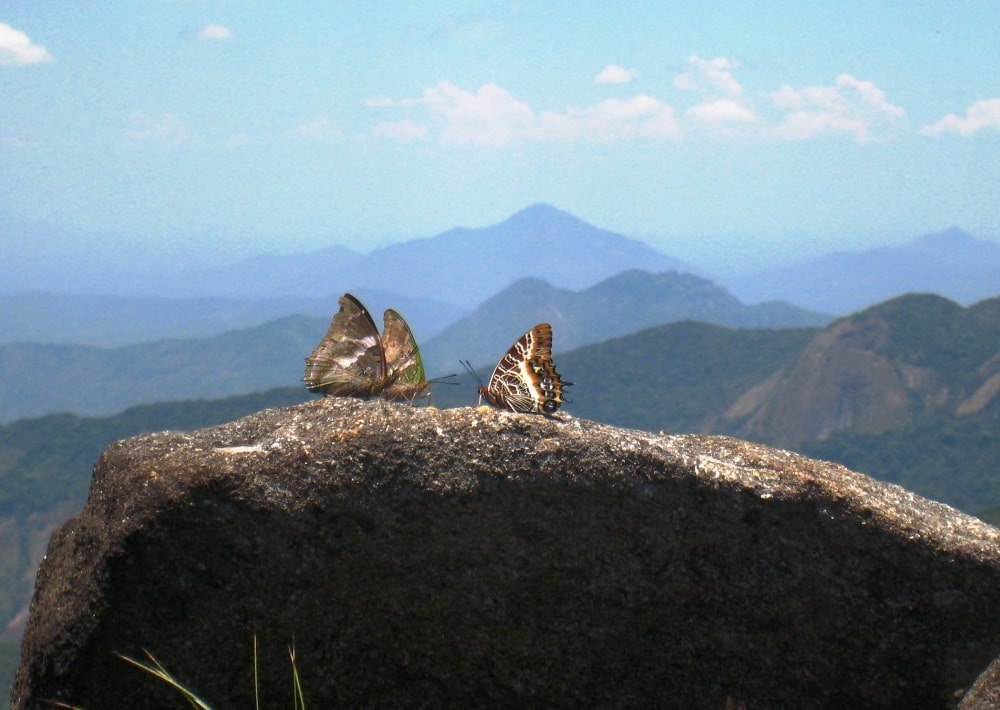
Butterflies rest on Mount Mabu in Mozambique's Butterfly Forest, by Julian Bayliss
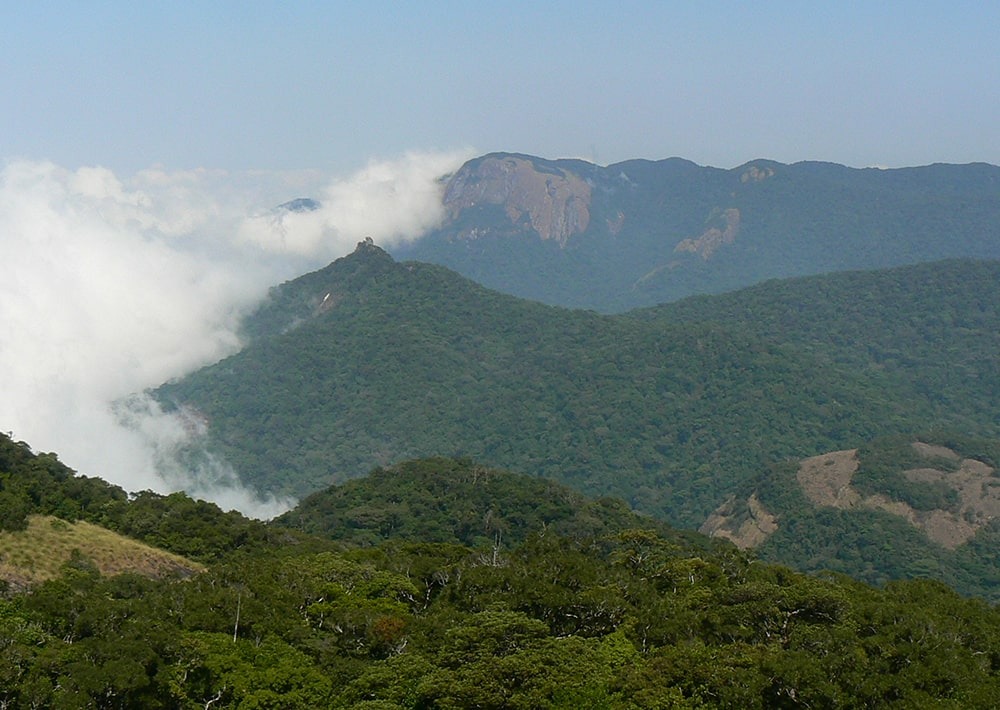
The Butterfly Forest of Mount Mabu in Mozambique, by Julian Bayliss

The Mount Mabu Forest Viper, by Bill Branch
Save endangered species
Endangered residents of this forest include the Mount Mabu Bush Viper (EN), Mount Mabu Horseshoe Bat (EN), the tropical parasitic plant known as Mabu Mistletoe (EN) and Vincent’s Bush Squirrel (EN). Of the 126 bird species identified, seven new populations of globally threatened species—including the Thyolo Alethe and Swynnerton’s Robin—are protected nowhere else. Given the abundant biodiversity here, it is possible that many more species new to science may be discovered as biodiversity surveys continue.
Most of the newly discovered species sheltered by Mount Mabu are endemic only to the mountain itself or to the small ecoregion. This landscape is designated a Key Biodiversity Area, an Important Bird Area and a Tropical Important Plant Area.
Protect this untouched forest
Mabu Forest is the largest contiguous block of intact rainforest in this ecoregion between Mozambique and Malawi. Mount Mabu is important in the daily lives of local people who rely upon the land for their physical and spiritual needs. For centuries, it has remained isolated from outsiders and protected by local communities, 80% is pristine old growth forest.
But now, outside forces seeking to profit from mining and logging are targeting the unspoiled areas of Mabu Forest. Being isolated is no longer enough to protect this precious place.
Support local communities
Mount Mabu plays a central role in the daily lives of local people who rely on the forest for their physical survival (farming and hunting) and spiritual sustenance. Mabu Forest must be protected—by the people who hold Mount Mabu sacred, for the rare and endemic species we know about, and for those yet to be discovered.
Our partner is in the process of working with community members to create a new governance system in which each community’s needs and goals are represented. Once selected, representatives from each community will come together to discuss how the protected area will be managed. Based on their collective decision making, they will move forward together with a mutually agreeable plan to protect and patrol the Mabu Forest.
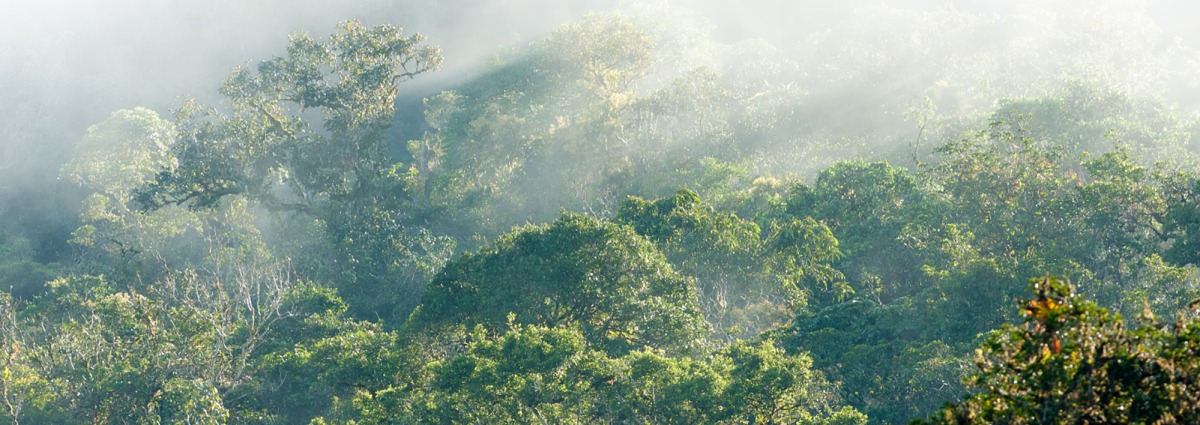

We Value Transparency.
Conservation work is critical, challenging, and can be costly. We work hard to ensure we raise only the funds needed for each project. In the rare case we raise more money than needed or a project comes in under budget, excess monies will be transferred to the Conservation Action Fund. This fund supports our important conservation work throughout the tropics.
Learn more about the Conservation Action FundLearn more about the Conservation Action Fund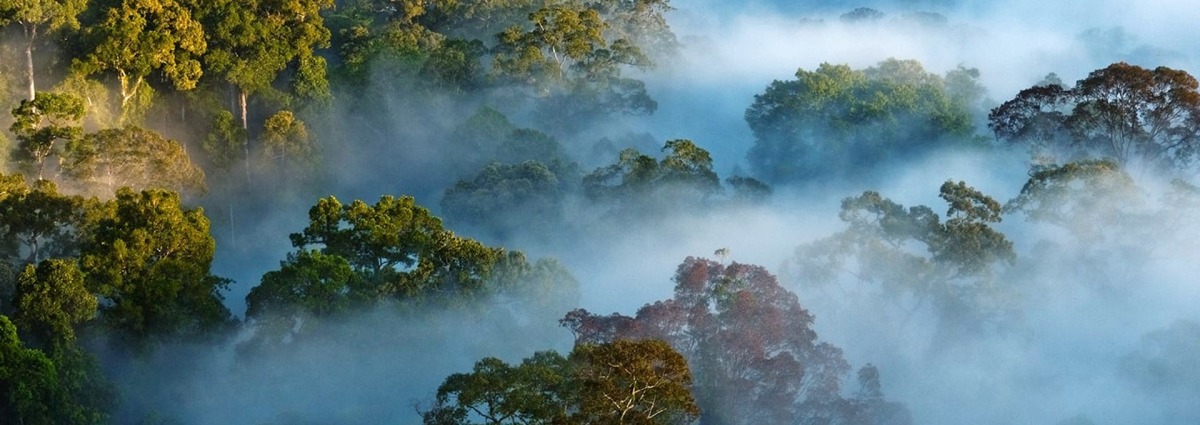

Partnering to Save Rainforest
Our partners’ ability to work with their governments and build strong connections with local communities ensures the successful implementation of our projects.
Learn More About This PartnerLearn More About This Partner
